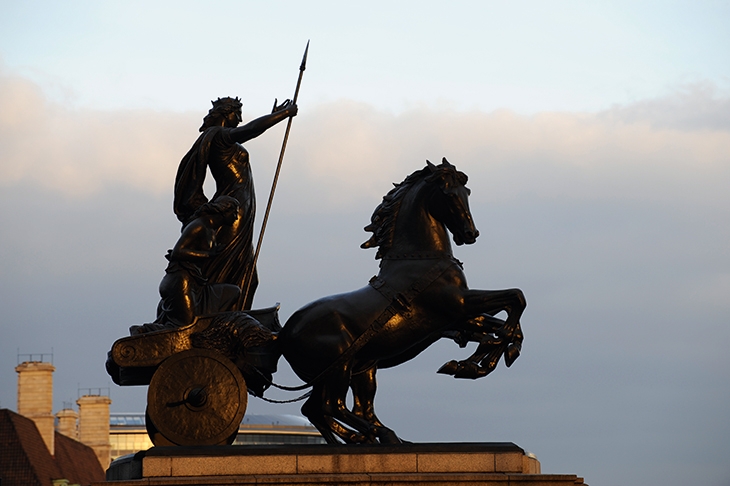All roads lead to Rome, the saying goes. Well, all roads except for the Roman road of Watling Street, which at one end takes you to Dover (Dubris) and at the other Wroxeter (Viroconium) in Shropshire.
I was always only vaguely aware of this thoroughfare but the name began, in recent years, to nag on my weekly visits to Canterbury (Durovernum Cantiacorum). When approaching the city centre from the station, I would see a street sign bearing the name on the side of a branch of Boots. It took some time to dawn on me that this was the very same Watling Street I had been told about in school history classes. The street sign in Canterbury isn’t unique, though: ‘Watling Street, EC4’ is affixed to a wall a few minutes’ walk from London Bridge station.
Strictly speaking, Watling Street isn’t a Roman Road, as the trackway was first used by the pre-Celtic and then the Celtic inhabitants of Britain. The author of St Paul in Britain (1861), R. W. Morgan, recalled: ‘From Dover to Holyhead ran the British Causeway, constructed by Dynwal and his son, Beli the Great, 400 bc, called Sarn Wyddelin, or the Irish Road.’
Watling Street came to be associated with the Romans since they were the ones who paved it, beginning in 47 ad, soon after they invaded. Aulus Plautius, conqueror of Kent, also proceeded to straighten the grassy dirt path for the purpose of conveying his supplies and material of war from the Continent. From Shropshire, one tributary continued on the historical route to the tip of north-west Wales, while another headed north, past Hadrian’s Wall to Pictish Scotland.
Its English name derives from the Anglo-Saxons who settled in St Albans (Verulamium) after the Romans had gone.








Comments
Join the debate for just £1 a month
Be part of the conversation with other Spectator readers by getting your first three months for £3.
UNLOCK ACCESS Just £1 a monthAlready a subscriber? Log in